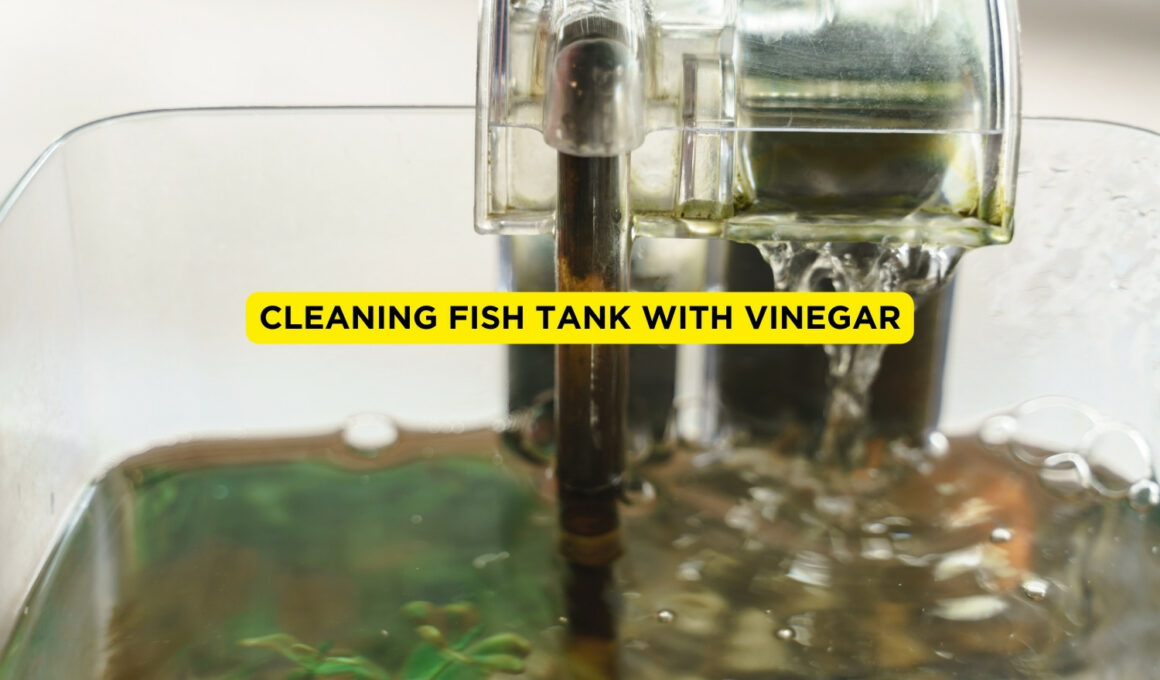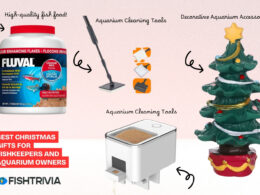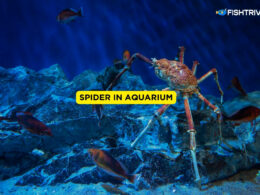In this article Show
You will see a hard water stain in your fish tank right above the waterline. These water stains can also be on your aquarium decorations. A clean aquarium can bring the best view to your living or bedroom. But being dirty could bring the worst look.
Every fish pet owner has the common concerned question, can you clean your fish tank with vinegar? Is it safe or will it have any effect on the fish?
We should answer this question straight away, yes of course. However, you must make proper use of it. You must know which type of vinegar is safe and suitable for cleaning the fish tank before using vinegar to purify it for the first time.
White vinegar is a quick means for home washing windows and other bottles. According to the National Capital Poison Center, this common product contains nonporous surfs between 4 and 7 percent acetic acid. This content is so useful for removing spots of water, limes, and other grunge.
Please be careful when washing a vinegar tank, since misuse will harm your fish or other aquarium-making animals. Well, there is a particular form of vinegar, known as white vinegar, distilled.
The easiest way to cure glass and rough water stains is with pure white vinegar. For this cleaning job for your aquarium, they are extremely healthy and effective.
Let’s dive into how to disinfect a glass of vinegar for a fish tank. How are trees, decorations, and rocks to clean aquariums? We will show you how to clean a vinegar fish tank correctly in this post.
Can You Use Apple Cider Vinegar?
Cider or vinegar from Apples is rarely filtered and contains organic materials such as yeast, which in fish tanning tanks are not entirely healthy.
Apple vinegar is made from distilled, crushed apple juice, and squeezed out. After the fermentation process is finished, bacteria and yeast are added to the juice. The best for use in fish aquariums is white distilled vinegar, typically five percent acetic acid.
When you clean a pre-lived fish tank, you should use it right except for the overpowering scent of vinegar. Mix one part of the water with one part of vinegar when you clean.
In other words, there is no organic substance known as toxic to aquarium fish in apple cider vinegar. That means that most aquatics are primarily cautionary attached to white vinegar.
Will Vinegar Kill Your Fish?
In a way that kills fish that like alkaline water, too much vinegar can make the tank too acidic. While fish like Oscars and neon tetras will stay longer.
Even, if you have snails in your aquarium, then water with a low ph is dangerous. In the vinegar, the acetic acid reacts and dissolves the coats.
It may have a possibility, but vinegar is normally healthy for both fish and plants since it is used to disinfect aquariums. Using only small, filtered volumes when the fish tank is washed will make no big changes to the water ph even though they spill into the tank.
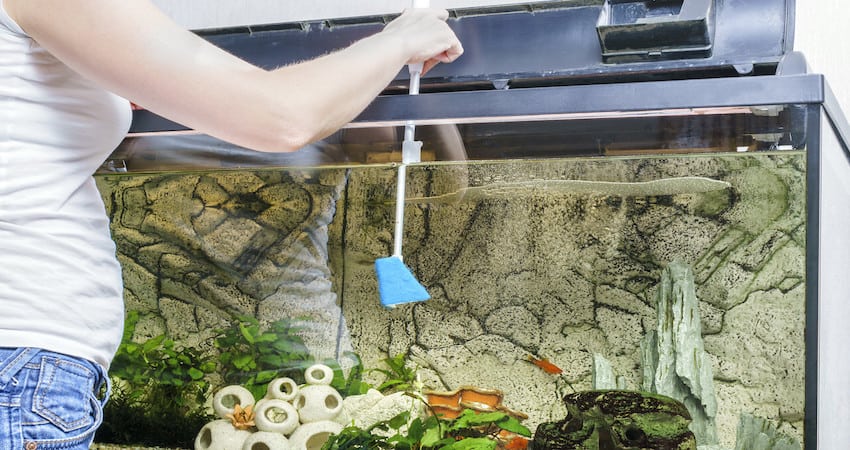
Cleaning Fish Tank With Vinegar
Here are the ways to clean your fish tank with vinegar;
1. Relocate the Fish
First of all, place your aquarium fish in the right place. If you put them in a tank containing fish, it will be safest. You should wear a large size bucket if you don’t have a separate fish storage tank. No matter if you want to hold this fish, note that this cleaning job can take a half-hour to an hour. You should then find an adequate location for at least an hour to be secure.
2. Fill Up and Dump The Vinegar
Next, top up the white vinegar in your fish tank. You have to load this chemical in at least half your tank. Set it for at least half an hour afterward. And empty the vinegar of the tank after 30 minutes. Be sure you dispose of them so other animals will not be hurt in a suitable location.
3. Remove Hard Water Stain From Tank
You could have a piece of dried hard water tin or algae if you purchased your tank second-hand. Filters, tubes, and other devices can also be used to develop rough water tubing along the waterline. Acetic acid is solid enough in white vinegar to dissolve the layers of hard water.
In comparison to many household items for lime removal, vinegar is correctly used and does not leave any trace to kill the fish. A razor or an algae scraper may accompany this move. Scrap the tank side with it before the algae and calcium accumulation have been eliminated.
For cleaning a fish tank with vinegar, only diluted white vinegar is suitable for use. Other vinegar styles can contain impurities like yeasts or sulfites that, according to Aquaria Wise, don’t mesh with a safe aquarium.
4. Cleaning The Tank
Take a spare but dumped soft piece of cloth and scrub vigorously inside your tank. A moist sponge is also ideal for cleaning this kind, but for this, you need to use a new sponge. Any accumulators, such as dirt and grime, can require special attention. You take care of these spots and take care of them.
You may want to wear aquarium gloves, particularly if you’re allergic to anything like a synthetic salt mixture in your tank. Choose plastic gloves for use in aquariums with shoulder length.
5. Amount of Changed Water
Think about how much water you can change and how much you can change the bioload of your tank. Goal to change 25-50% of the water a week.
If the aim is to minimize nitrate and phosphate levels to a minimum, significant, more regular changes in water are important. And if you change greater water, you will change it less often.
Notice that once a month a weekly 10% water shift is less than 40%.
6. Decoration Cleaning
Water nutrients and exposure to light cause algae, so they can collect on your tank decorations. The decorations can be cleaned off with an algae pad, or with an unused soft-bristled toothbrush when you siphon in the tank spray. It could injure your fishy buddy, stop using soap!
If you have algal problems, it can help to reduce nutrient aggregation or light exposure. You can close the coverings of your window, remove the tank from your window, or alter the illumination plan. Alternatively, allow bigger or more regular shifts in water.
Take them out of the tank and soak the objects in a big bucket packed with water and 1⁄4 cup (59 mL) of bleach for 15 minutes if it is difficult to clean the decorations. Thoroughly disinfect the products and wash them with the chlorine water source. Let it dry fully until it returns to the tank whether they are porous.
7. Clean Aquarium Plants
If you have vinegar, mineral deposits from aquatic plants can be washed and extracted. You need to cut the plants from your tank and soak them for five minutes in a vinegar solution. Then clean the plants off and rinse them in running water before they are returned.
Sow off the algae with a finger or clean toothbrush, alternatively, for about 10 minutes, in the boiling water. For live plants, whether you have susceptible plants, soak them in a gentle bleach solution for five minutes or less.
8. Add Fresh Water
Replace the water you have taken at the tank’s temperature with fresh, treated water. The best way to monitor the temperature is an infrared thermometer. The preservation of your fish’s health is critical within your dictated temperature parameters. Recall, for most fish, tidy is too hot. Do not overfill the tank.
When using tap or faucet water, it is important to condition your fish to eliminate chlorine, heavy metals, and other contaminants. Choose an ammonia detoxifier chemistry conditioner. If the nitrates are astronomically high, the water from your nearest fish shop can be modified by reverse osmosis. To stabilize your pool, install a freshwater aquarium buffer.
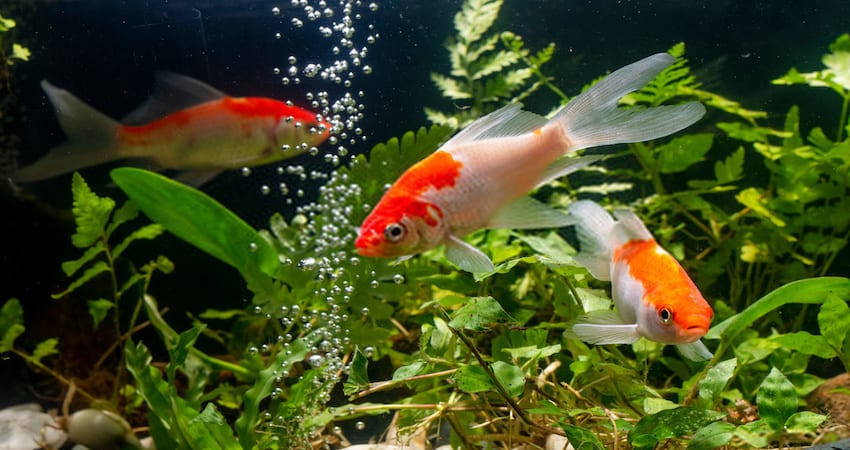
9. Replace the Fish
You need to wash your whole fish tank before you replace your fish inside the tank, after scraping all your dirt and grime from your aquarium. Clean water for at least twice to wash the entire tank. Replace the animal fish in the tank after that. Your aquarium would be new to you.
Above Mentioned steps are the main procedures that one may follow to clean their fish tank with vinegar. Following this, you may find some variation as per your fish tank size, age, shape, and decorations. At the end of the day, cleaning your beloved things are kind of hobby, which you should full fill without feeling any fuss.
Conclusion
You need not clean your aquarium, and routine and continuous upkeep is essential to keeping your aquarium clean. Some of the most critical ways of making sure the fish remain safe and comfortable are partial water changes.
You learned how to scrub a fish tank with vinegar. Now, executing it is your turn. But don’t use soap to purify the aquarium whatever you do. Since the glass can be replaced very difficult. To keep the fish tank fully soap-free, you must wash 5=6 times. For any kind of fish, a small-size soap or soap spray can be lethal.
Partial water modifications make sure the bacteria colonies are not removed or harmed which is vital to your aquarium. We may not also suggest using any form of glass cleaner as they are highly poisonous and dangerous to fish in this cleaning process. However, it would be best if you used a glass cleaner to clean your fish tank’s external glass.
You should watch this video to knowing more about Cleaning Fish Tank With Vinegar, Best of luck;






